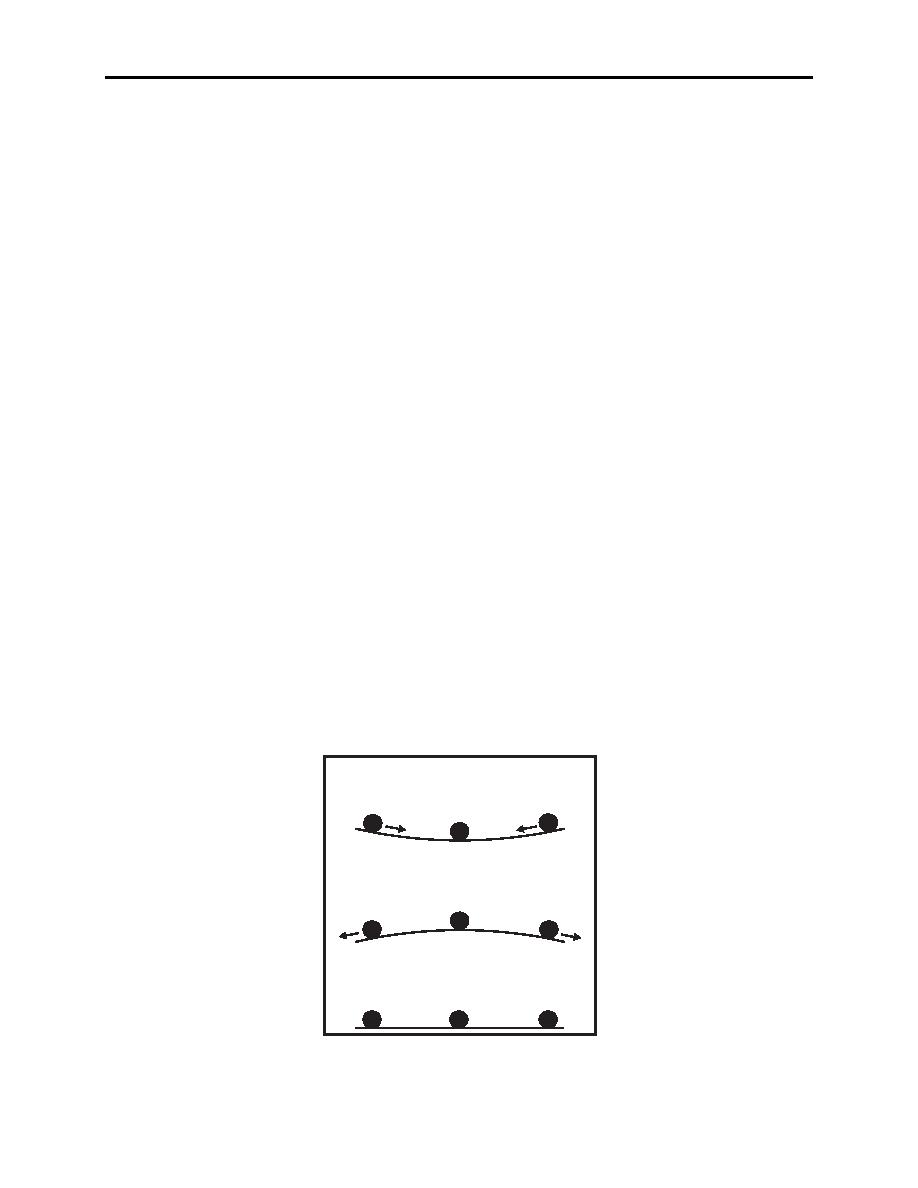 |
|||
|
|
|||
|
|
|||
| ||||||||||
|
|  CHAPTER TWO
T-34C CONTACT
tendency to enter a stalled condition. Therefore, most airplanes are designed with their CG
located slightly forward of the CP to create a nose-down tendency to pitch downward away from
a stalling condition. This provides a safety feature in the characteristics of the airplane. While
the airplane is flying within its range of normal speeds, the airflow exerts a downward force on
the horizontal stabilizer; thus, at normal cruise speed it offsets the inherent nose-down tendency
of the airplane.
Generally, in straight-and-level flight, the wings on each side of the airplane have identical
angles of attack and develop equal lift. This laterally balanced condition normally keeps the
airplane level. Occasionally though, a gust of air will upset this balance by increasing the lift on
one wing, causing the airplane to roll around its longitudinal axis.
The T-34C is designed so that the outer tips of the wings are higher than the wing roots. The
upward angle thus formed by the wings is called dihedral. When a gust causes a roll, a sideslip
will result. This sideslip causes the relative wind affecting the entire airplane to be from the
direction of the slip. When the relative wind comes from the side, the wing into the wind is
subject to an increase in angle of attack and develops an increase in lift. The wing away from the
wind is subject to a decrease in angle of attack, and develops a decrease in lift. The changes in
lift effect a rolling moment tending to raise the windward wing, hence dihedral contributes to a
stable roll due to sideslip. The T-34C has positive static stability. That is, it tends to return to
the condition for which it has been trimmed.
An aircraft trimmed for steady flight is in a state of equilibrium. In other words, the sum of all
the forces and moments is zero. Displacement from this position by some outside force, such as
a gust of turbulence, creates an unbalance and causes the aircraft to demonstrate an initial
tendency. This tendency will be to (a) return, (b) be displaced further, or (c) remain in the new
attitude or position. This initial tendency is known as static stability. If the aircraft tends to
move back in the direction of its trimmed attitude, it is said to be statically stable or to have
positive static stability. If the aircraft continues to move away from trimmed equilibrium, it is
statically unstable or it has negative stability. An aircraft that stays in its displaced attitude,
neither moving positively nor negatively, is said to be neutrally stable or neutrally statically
stable (Figure 2-3).
Positive Static Stability
Tendency to return to
equilibrium
Negative Static Stability
Tendency to continue in the
displacement direction
Neutral Static Stability
Equilibrium encountered at
any point of displacement
Figure 2-3 Static Stability
2-6 INTRODUCTION TO T-34C AERODYNAMICS
|
|
Privacy Statement - Press Release - Copyright Information. - Contact Us |